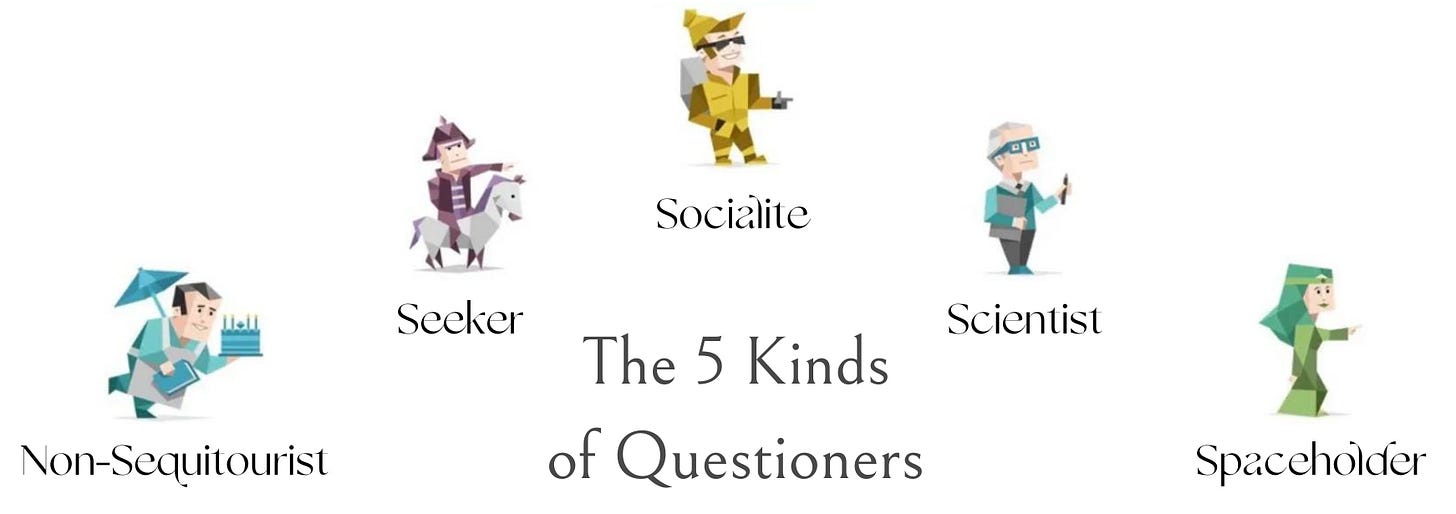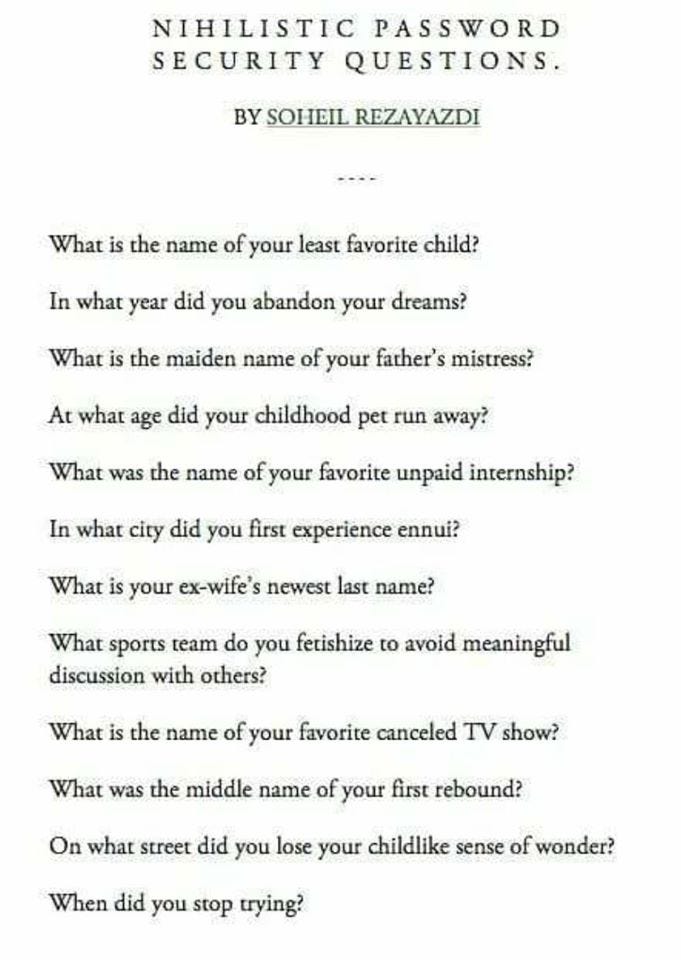There was a time, not so long ago, when curiosity felt like an impossible skill for me.
I would sit in a conversation, racking my brain for anything I could say. The only options were to talk about myself - which felt awkward unless they’d asked - say a non sequitur, or come up with a question.
But I felt so frozen that no questions came to mind. What was off limits to ask? What would they want to talk about? What if I wasn’t really interested? They say that only boring people get bored in conversation. What if I was, secretly, really boring, and that’s why I couldn’t find my curiosity??
Eventually I did what I do with all problems:
Play a bunch of AR Games to practice the skill
Research the shit out of it, and
Start teaching others how to do it.
I played a lot of Curiosity and Hot Seat, from the AR Games Manual. I created a course on Deepening Conversations.
Gradually, slowly, I learned how to start conversations. And finally, I learned how to deepen them.
In this article, Part 1, we’ll talk about different types of question-askers.
In Part 2, we’ll discuss how to start conversations in different situations. I’ll share some of my favorite starter questions.
In Part 3, we’ll look at how to keep conversations going, and how to deepen them. I’ll share some of my best questions and tips for this phase.
Then, in Part 4, we’ll discuss how to find your curiosity when it’s lacking.
Let’s start with something sexy. Since almost everyone loves typology systems, here are…
The 5 Types of Question-Askers
(Credit MBTI for the graphics pack)
The 5 Kinds of Questioner are the Non-Sequitourist, Seeker, Socialite, Scientist, and Spaceholder.
Free subscribers, I’ll give you the first 1.5 of these. Then you can donate just $5/month if you are interested in seeing the rest (and all my other audios and articles!)
The Non-Sequitourist
Envision the following conversation…
“Where are you from?”
“Austin, Texas. I’ve been there for about 4 years…”
“Have you ever been to Bermuda?”
“What? No, I haven’t, I -”
“What’s your favorite color?”
Conversation with a Non-Sequitourist is like getting taken on an unexpected and often uninvited trip through someone’s mental landscape. We may get stared down and peppered with a scattershot of questions, or the asker may do everything they can to avoid eye contact and seem to pull their questions from outer space. Either way, the focus of conversation is clearly on the interests of the asker, not the answerer.
This is, I believe, a classic type of interaction for autists. But it’s common for socially anxious folks too, or those who have just never learned how to follow a thread of conversation.
When to use it
Non-Sequitourist questioning is useful when trying to catch someone off-guard. There are situations, such as when a person is approaching you with anger or mal-intent, when being confusing is an asset. Asking non-sequiturs can make you hard to predict, and thus break whatever frame an antagonist is approaching you with.
Non-sequitur questioning can also be valuable when you have a short period of time to get a lot of disconnected information, as in an interview.
If you’re faced with a Non-Sequitourist
One technique you can use is to pause them.
“Hey, I’m appreciating your questions, but I’m getting a little overwhelmed. Can we take a breath for a second? Ok - what would you REALLY like to know about me?”
You can also ignore some of their questions and turn the conversation around.
“Have you been to Bermuda?”
“Have YOU been to Bermuda?”
This may result in confusion, but it creates a pattern interrupt. You can then move the conversation in a direction you want.
If you are a Non-Sequitourist
Practice putting your attention on the other person. Really listen to their responses. Ask followup questions, as we’ll practice in Part 3 of this series. You can still ask what you’re curious about - just ask at least one followup question for each curiosity. Remember to allow some silence into the conversation as well, so the other person can ask about you.
Next, we have…
The Seeker
Here’s one version of a Seeker conversation:
“Where are you from?”
“I’m from Austin, Texas.”
“Don’t you have trouble with the politics?”
“I mean, they’re not my favorite, but I live there more for the people.”
“Yeah, but what do you think about Abbott?”
And another version, perhaps encountered on a street corner:
“Where are you from?”
“Austin, Texas.”
“Have you heard of Jesus Christ?”
The Seeker is the Questioner with an agenda. And before we judge this type, let’s be honest: we have all been the Seeker at one time or another. In fact, it’s hard to get through a conversation without Seeking at least once.
Someone mentions a problem they’re having? We start asking pointed questions, Seeking for where we can help.
Someone talks about job openings at their company? We start exploring what potentials there might be for us or our friends.
Someone begins talking about their day? We prompt them with something DEEP, to make the conversation more interesting to ourself.
Seeking happens when the conversation becomes goal-directed, usually to the purposes of just one member.
Keep reading with a 7-day free trial
Subscribe to Sara’s Substack to keep reading this post and get 7 days of free access to the full post archives.




